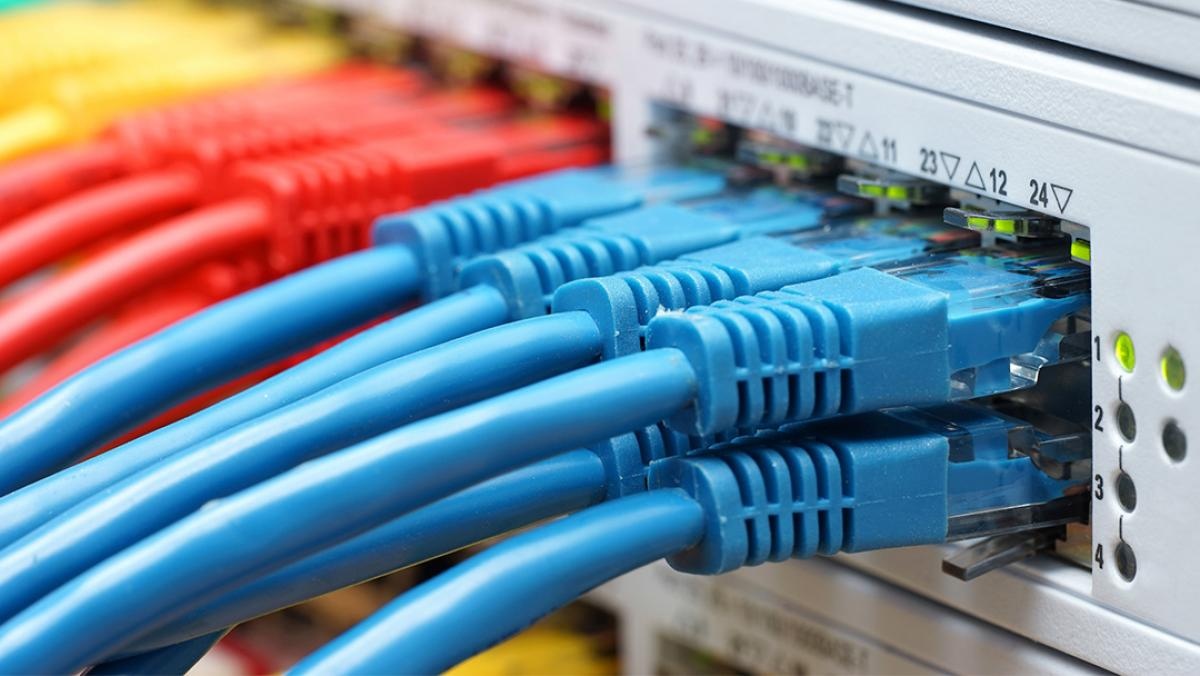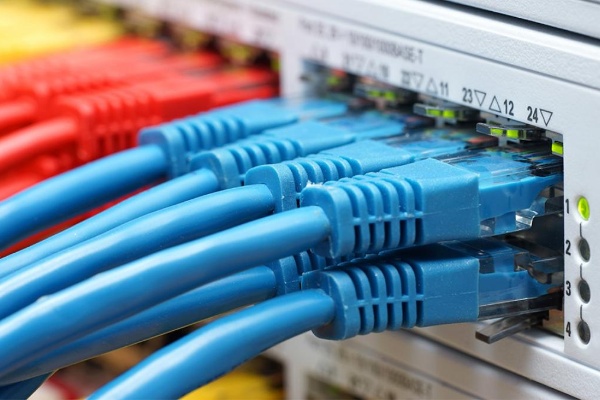在当今互联的世界中, 以太网是现代网络的支柱. 无论您是要设置家庭网络还是管理复杂的业务基础设施, 了解以太网至关重要. But what exactly is Ethernet, and why is it so important? This guide will answer these questions and provide a comprehensive overview of Ethernet’s history, standards, components, 优点, 和应用.

The Basics of Ethernet
What is Ethernet? At its core, Ethernet is a wired networking technology that allows devices to communicate within a local area network (LAN). It facilitates data transmission in the form of frames over cables or fiber optics, ensuring fast and reliable connectivity.
Ethernet’s story begins in the 1970s, when Robert Metcalfe and his team at Xerox developed the first version. Initially designed for internal office use, Ethernet quickly gained traction due to its simplicity, reliability, and scalability. Over the decades, it has evolved into a robust technology that supports everything from small home networks to expansive corporate systems.
One of Ethernet’s defining features is its use of a protocol to control how data is transmitted. This ensures that devices can send and receive information without interference, a significant improvement over earlier technologies.
Ethernet Standards
Ethernet’s functionality is governed by the IEEE 802.3 standard, which defines how devices communicate at the physical and data link layers of the OSI model. These standards have been updated over time to accommodate increasing demands for speed and efficiency.
Here are the most common Ethernet standards:
– Classic Ethernet (10 Mbps): The original standard, now largely obsolete but foundational to modern developments.
– Fast Ethernet (100 Mbps): Introduced in the 1990s to meet growing demand for higher speeds in home and office environments.
– Gigabit Ethernet (1 千兆比特): A milestone for high-speed data transmission, now standard in most networks.
– 10-Gigabit Ethernet (10 千兆比特): Widely used in data centers and for high-performance computing.
– Beyond 10 千兆比特: Standards like 25G, 40G, and even 400G Ethernet cater to the needs of large-scale enterprise networks and advanced technologies such as AI and cloud computing.
These standards ensure that Ethernet remains versatile and adaptable to different networking needs, supporting both current and future applications.

Ethernet Components
An Ethernet network comprises several key components that work together seamlessly. Each component plays a critical role in ensuring efficient and reliable communication.
Ethernet Cables
– Twisted Pair Cables: These are the most commonly used cables, with options like Cat5e, Cat6, and Cat6a. Each category supports varying speeds and distances, with Cat6a offering improved shielding to reduce interference.
– Fiber Optic Cables: These cables use light to transmit data, making them ideal for long-distance and high-speed transmission. They are commonly used in enterprise and industrial settings.
Network Devices
– Switches: These devices connect multiple devices within a network, directing data to the correct destination efficiently.
– Routers: While switches handle internal communication, routers connect networks to the internet or other networks.
– Network Interface Cards (NICs): These are hardware components installed in devices to enable Ethernet connectivity.
Connectors
– RJ45 Connectors: Standard for twisted-pair cables, ensuring secure and stable connections.
– Fiber Optic Connectors: Specialized connectors used in fiber optic networks to ensure precise data transmission.

Key Advantages of Ethernet
Why choose Ethernet over other networking options? Here are its primary benefits:
– Speed: Ethernet provides faster data transmission than most wireless technologies, with options ranging from 10 Mbps to 400 千兆比特.
– Reliability: Ethernet ensures stable connectivity with minimal interference or signal loss, making it ideal for critical applications.
– Security: Wired connections are inherently more secure than wireless ones, reducing the risk of unauthorized access.
– Cost-Effectiveness: Ethernet cables and devices are widely available and affordable, offering excellent value for both individuals and businesses.
– Scalability: Ethernet networks can easily be expanded to accommodate growing needs, making them future-proof.
Moreover, Ethernet’s low latency and high performance make it a preferred choice for activities requiring uninterrupted connectivity, such as video streaming, gaming, and remote work.
Ethernet vs. Other Networking Technologies
When comparing Ethernet to other technologies like Wi-Fi or DSL, Ethernet stands out for its stability and performance. Here’s how it compares:
Ethernet vs. Wi-Fi: While Wi-Fi offers mobility, Ethernet delivers faster speeds, lower latency, and higher reliability. This makes Ethernet ideal for environments where consistent performance is crucial, such as offices and gaming setups.
Ethernet vs. DSL: DSL (Digital Subscriber Line) is an older technology primarily used for internet connections. Ethernet, on the other hand, is designed for both local and wide-area networks, offering superior speed and reliability.

Common Applications of Ethernet
Ethernet’s versatility makes it suitable for a wide range of applications:
– Home Networking: Connecting computers, smart TVs, gaming consoles, and more to ensure stable internet access.
– Business Networks: Building secure and scalable LANs for offices, ensuring seamless communication between employees and systems.
– Industrial Control Systems: Powering automation and IoT devices in factories and warehouses, where reliability is paramount.
– 数据中心: Facilitating high-speed communication between servers and storage devices to handle massive data loads efficiently.
From residential setups to enterprise-grade systems, Ethernet plays a critical role in connecting devices efficiently and reliably.
The Future of Ethernet
The future of Ethernet looks promising, with emerging technologies like 2.5G and 5G Ethernet gaining traction. These advancements promise faster speeds and greater flexibility, catering to the needs of modern applications such as AI, IoT, and smart cities.
Ethernet is also evolving to support greener technologies, with energy-efficient Ethernet (EEE) standards reducing power consumption without compromising performance. Furthermore, it continues to integrate seamlessly with wireless technologies like 5G, ensuring a balanced mix of speed and mobility.
Choosing the Right Ethernet Setup
Selecting the right Ethernet components is essential for optimizing your network:
1. 电缆: For home use, Cat5e or Cat6 cables are sufficient, while businesses may require Cat6a or fiber optics for greater performance.
2. Switches and Routers: Choose models that match your network’s size and complexity, ensuring they can handle your data demands.
3. Setup Tips: Organize cables neatly, avoid running them near electrical lines to reduce interference, and use quality components to minimize signal loss.
A properly configured Ethernet network ensures seamless communication, enhanced security, and long-term reliability.

结论
总之, Ethernet remains a cornerstone of modern networking, offering unmatched speed, reliability, and scalability. Its adaptability has kept it relevant in an era of rapid technological advancement, making it a vital component of both personal and professional networks.
Whether you’re upgrading your home network or designing an enterprise system, understanding Ethernet’s capabilities is crucial. Ready to enhance your connectivity? Explore the latest Ethernet technologies today and build a network that meets your needs effortlessly!
FAQs About Ethernet
1. What is the maximum speed of Ethernet?
– Current standards support up to 400 千兆比特, with future advancements promising even higher speeds.
2. Can Ethernet and Wi-Fi work together?
– Yes, they can complement each other, providing a balance of mobility and stability.
3. How do I troubleshoot Ethernet connection issues?
– Check cables, restart devices, and ensure drivers are updated.
By addressing these common questions, you can make informed decisions about your Ethernet network. Optimize your connectivity today with Ethernet!



